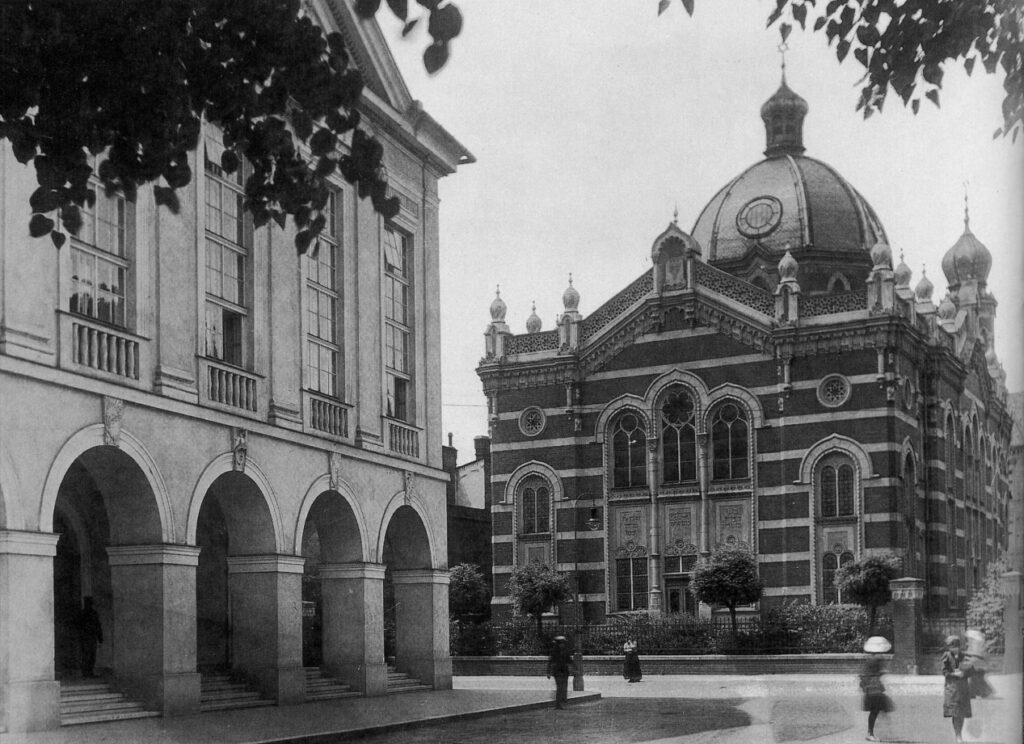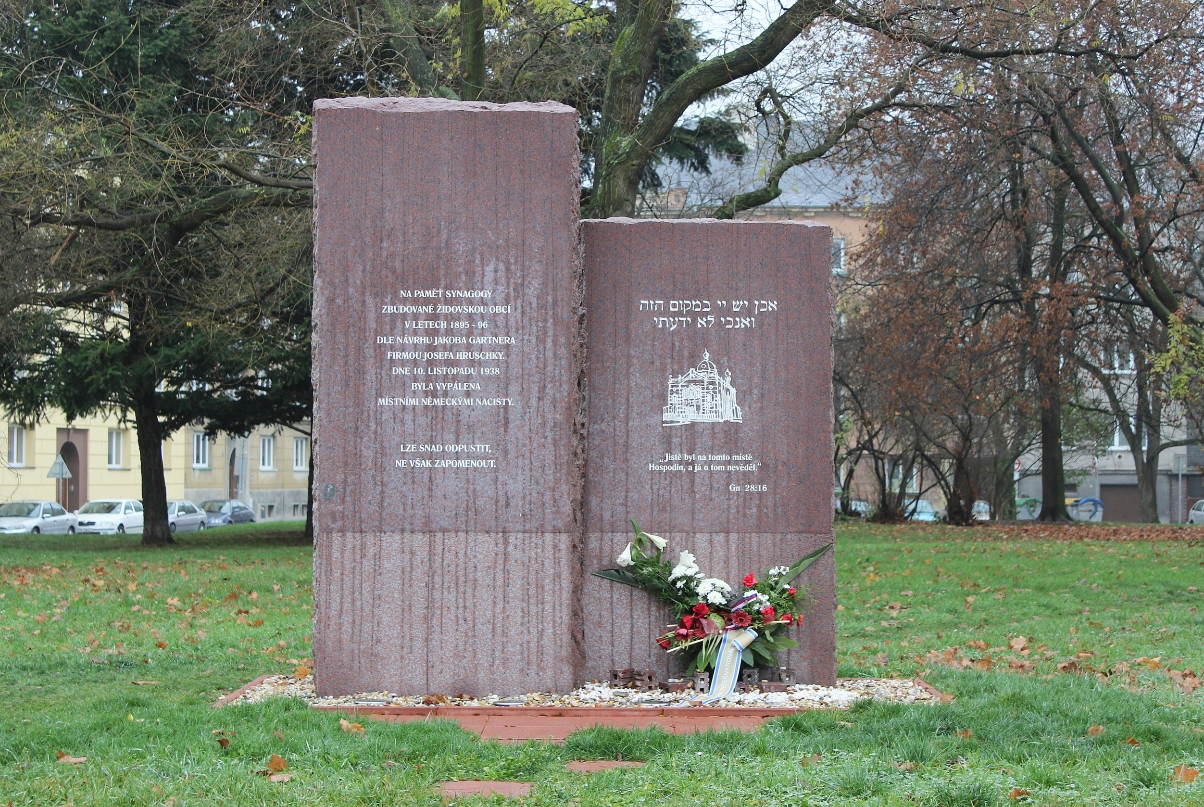The November Nazi pogrom in the Czech lands – Opava, Memorial on the site of the former synagogue
Fact of the Czech figure „Racial genocide in occupied Czech lands”
Part of the „The Holocaust” topic
Since 1935, an anti-Semitic campaign in Nazi Germany had been underway, which was manifested in state-controlled discrimination against the Jewish population. In an act of protest, a Jewish youth, Herschel Grynszpan, assassinated the secretary of the German embassy in Paris. As a result, the secretary died on 9 November 1938, which the Nazis used as a pretext to unleash a widespread pogrom that broke out across Germany on the same day. The question remains as to how much of it was state-led and how much was more a spontaneous reaction of a nazified population. The fact is that the state authorities encouraged members of Nazi organisations and ordinary Germans to lynch Jews (about a hundred were murdered) and to destroy their property and religious places (the broken glass gave the event the name ‘Kristallnacht’).
The pogroms were also carried out in Bohemian, Moravian and Silesian towns, that had become part of the German Reich after the Munich Agreement. More then thirty synagogues were destroyed, for example in Česká Lípa, Český Krumlov, Liberec, Karlovy Vary, Mariánské Lázně, Opava, Tachov, Teplice, Trutnov, Ústí nad Labem, Znojmo and Žatec. Most of them are now commemorated by memorials, such as the one erected in 2013 on the site of the former synagogue in Opava. In some cases, however, synagogues and Jewish cemeteries were destroyed even later. In the Moravian metropolis of Brno, which remained in Czechoslovakia after Munich, the Nazis did not burn down a synagogue until March 1939, when Hitler’s army occupied the entire territory of the Czech lands and the Nazis of Brno took control of the city.
Many nazified Sudeten Germans were involved in the November pogroms. Most of them, however, were rather disgusted by the public violence, yet practically none of them took part in the active defence of the victims. The November pogrom was a turning point in the Nazi persecution of the Jews – from this point on, Jews were no longer threatened only politically and socially, but also physically.






